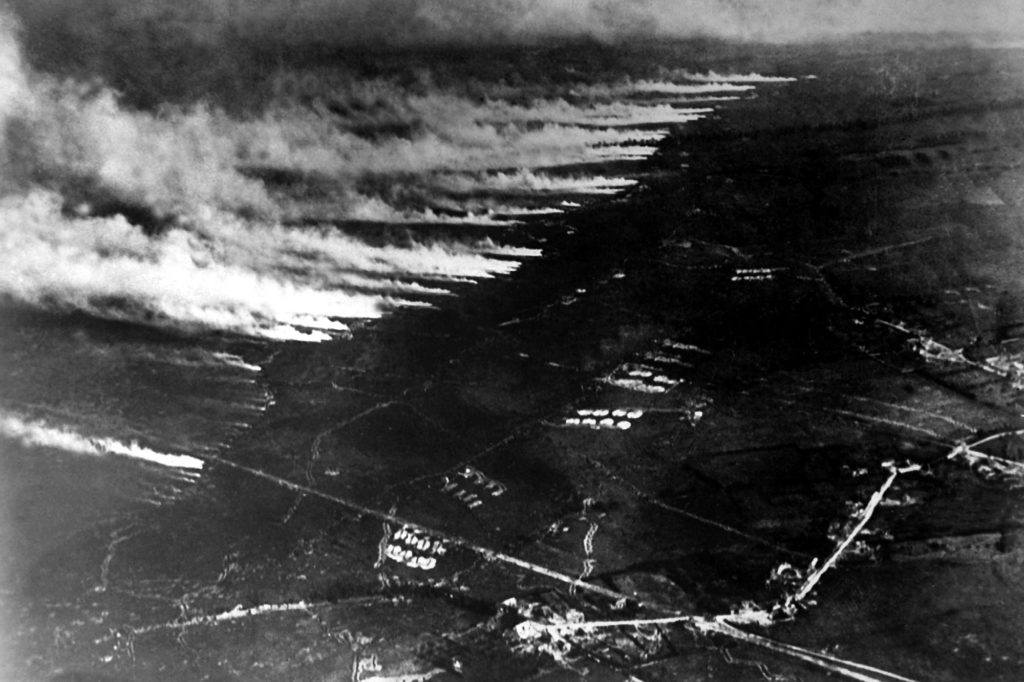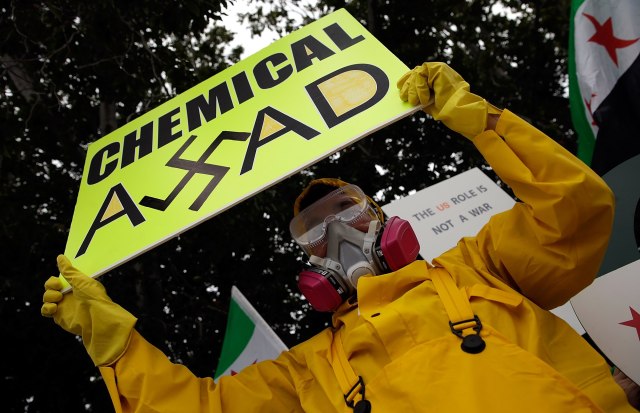
According to Clausewitz,[1. Major-General Carl Philipp Gottlieb von Clausewitz (1780 -1831)] the logic of war abhors moderation. In Vom Krieg (On War, 1832), the Prussian soldier and military thinker argues:
“If the wars of civilised people are less cruel and destructive than those of savages, the difference arises from the social condition both of states in themselves and in their relations to each other. Out of this social condition and its relations war arises, and by it war is subjected to conditions, is controlled and modified. But these things do not belong to war itself; they are only given conditions; and to introduce into the philosophy of war itself a principle of moderation would be an absurdity.”
For this reason, the international community has been trying to introduce that principle for a century and a half, including a complete ban on the use of chemical weapons. The Hague Convention of 1899 (reiterated in that of 1907) stated categorically, “The right of belligerents to adopt means of injuring the enemy is not unlimited.” It was specifically forbidden: “To employ poison or poisoned weapons.” Indeed, the “Contracting Powers” further agreed “to abstain from the use of projectiles the sole object of which is the diffusion of asphyxiating or deleterious gases.”
The ban had first been voiced exactly 150 years ago in the “Declaration of St. Petersburg” (November 1868).
War’s tendency to extremes
And yet, on 22 April 1915, at the Second Battle of Ypres, on the Western Front, one of the contracting powers, Germany, launched a huge and deadly chlorine gas attack against the British and French armies. In September, at the Battle of Loos, the British army retaliated, but with almost catastrophic results, for at this time gas could only be released from canisters in the front line, and depended therefore on wind direction for effect.

The following year, the (British) War Department Experimental Station opened at Porton Down in Wiltshire for the testing of chemical weapons, and, in May 1917, took on the additional responsibility for anti-gas defence and respirator development.
By 1918, both sides were routinely using both poisonous and incapacitating gas, delivered with increasing range and sophistication by artillery rather than released from canisters. There were, by some assessments, around 1.3 million casualties overall attributed to the use of gas, and the psychological effect on troops may have had an even greater effect. The casualties were by no means all fatal, but many were life-changing, and the full effects were often realised only later.
After the war, the Cabinet agreed that work should continue at Porton Down, which became initially the Chemical Warfare Experimental Station and then the Chemical Defence Experimental Station. As the Defence Science and Technology Laboratory (Dstl) today, it was responsible for identifying the nerve agent (Novichok) used in the attempted assassination of Sergei Skripal and his daughter in Salisbury.
At the 1925 Geneva Conference for the Supervision of the International Traffic in Arms, the French suggested a protocol for non-use of poisonous gases. This was registered in the League of Nations Treaty Series in 1929, and Britain ratified the protocol the following year but with reservations that permitted the use of chemical warfare agents in retaliation.
Ploughshares into swords
Chemical warfare took a step-change in 1936 with the accidental discovery of nerve agents by the German company IG Farben while working on insecticides. The Nazis were quick to appropriate the discovery. Hitherto, poisonous or incapacitating gas was either an asphyxiate (by inhalation), or else a blister agent from contact with the skin (and blinding in contact with the eyes). Nerve agents, absorbed through the skin and by respiration, affect the transmission of nerve impulses in the nervous system, are highly toxic and are thus favoured for their rapid effects. They also disperse quickly, unlike the earlier compounds, thus allowing the assaulting troops to exploit the chemical attack.
By 1938, the international situation having deteriorated markedly, the British Cabinet decided to step up offensive chemical-warfare research and production of war reserve stocks of chemical warfare agents for deterrence and retaliation. At the same time, the government initiated civilian defence measures, principally the universal issue of gas masks. By 1940, some 38 million had been distributed.
Throughout the Second World War, Britain maintained strategic and battlefield reserve stocks – and deployed them overseas – though they were never used because the Germans themselves never used theirs. Deterrence worked.
After the war, a plant was established at an RAF base near Portreath in Cornwall for the small-scale production of various chemical agents, including Sarin, one of the nerve agents originally synthesized by IG Farben. Around 20 tons were produced between 1954 and 1956 (given its toxicity, a considerable capability), and a larger-scale production plant was planned.
In 1956, however, the Cabinet took the decision to renounce unilaterally the British offensive chemical warfare programme. Seven years later, the Cabinet Defence Committee recommended re-acquiring a retaliatory capability. For a number of reasons, however, no new chemical weapons capability was acquired, and stocks were run down to the minimum necessary for continuing research and development in chemical defence.
Then, in the early 1980s, at the height of the Cold War, the Thatcher government, determined to reinvigorate the British contribution to Nato (and thereby encourage other European members to increase defence spending) concluded that in the face of the USSR’s huge chemical warfare programme the lack of a European retaliatory capability was an Achilles heel in Nato’s strategy. Political difficulties prevented any redevelopment of a British capability, however.
The US, not the UN, forces the issue
At this time, though, to modernise its ageing stockpile, the US Army was developing binary chemical weapons. Designed to mix two non-lethal chemicals to form a lethal agent while in flight to target – making for far handier and deployable weapons – binary weapons development was also an attempt to force the USSR into arms reduction talks.
- Prohibition of production and use of chemical weapons
- Destruction (or monitored conversion to other functions) of chemical weapons production facilities
- Destruction of all chemical weapons (including chemical weapons abandoned outside the state parties territory)
- Assistance between State Parties and the OPCW in the case of use of chemical weapons
- An OPCW inspection regime for the production of chemicals which might be converted to chemical weapons
- International cooperation in the peaceful use of chemistry in relevant areas
It succeeded. A bilateral agreement was signed in 1990, which led to the Chemical Weapons Convention (CWC) of 1993 prohibiting the development, production, acquisition, stockpiling, retention, and transfer or use of chemical weapons by its signatories.
The CWC is the treaty by which the present limitation and inspection regime functions, through the Organisation for the Prohibition of Chemical Weapons (OPCW).
The CWC is one of the most successful attempts in history to moderate an aspect of conflict. In January this year, the OPCW estimated that some 96% of declared stocks worldwide had been destroyed. [3. 192 states have become parties to the CWC. Israel has signed but not ratified; three more UN member states – Egypt, North Korea and South Sudan – have neither signed nor acceded. In 2013, Syria acceded to the convention]
The use of some of the remaining 4% at Douma is, however, a sober reminder of Clausewitz’s warning that war has its own logic – the tendency to extreme violence – and that it is only the “social condition both of states in themselves and in their relations to each other” that limits its cruelty.
Seen in that light, the action of the US, Britain and France to degrade the Syrians’ chemical weapons capability, and to deter further use, was ruthlessly logical.
Further Reading: John R Walker, Britain and Disarmament: The UK and Nuclear, Biological and Chemical Weapons Arms Control and Programmes 1956-1975 (Routledge, 2012)










Join the discussion
Join like minded readers that support our journalism by becoming a paid subscriber
To join the discussion in the comments, become a paid subscriber.
Join like minded readers that support our journalism, read unlimited articles and enjoy other subscriber-only benefits.
Subscribe